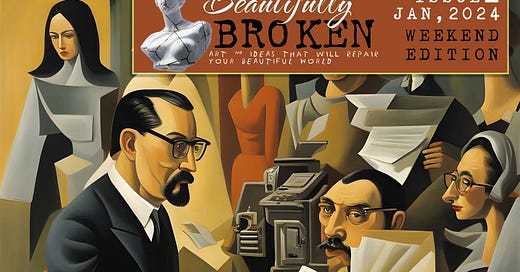Beautifully Broken Weekend Edition | Issue 1
Editorial, Feature Articles, Daily Enlightenment Prompts 26 Jan-2 Feb, 2024
EDITORIAL
First of all, thank you to everyone who subscribed, I hope you're finding some value in Beautifully Broken.
A special thank you goes out to paid subscribers who helped me meet some of my inflation-ridden bills this week so I can keep on sharing my art and teachings along with the knowledge that I've gathered over the years from my own teachers.
Keep reading with a 7-day free trial
Subscribe to Beautifully Broken to keep reading this post and get 7 days of free access to the full post archives.




